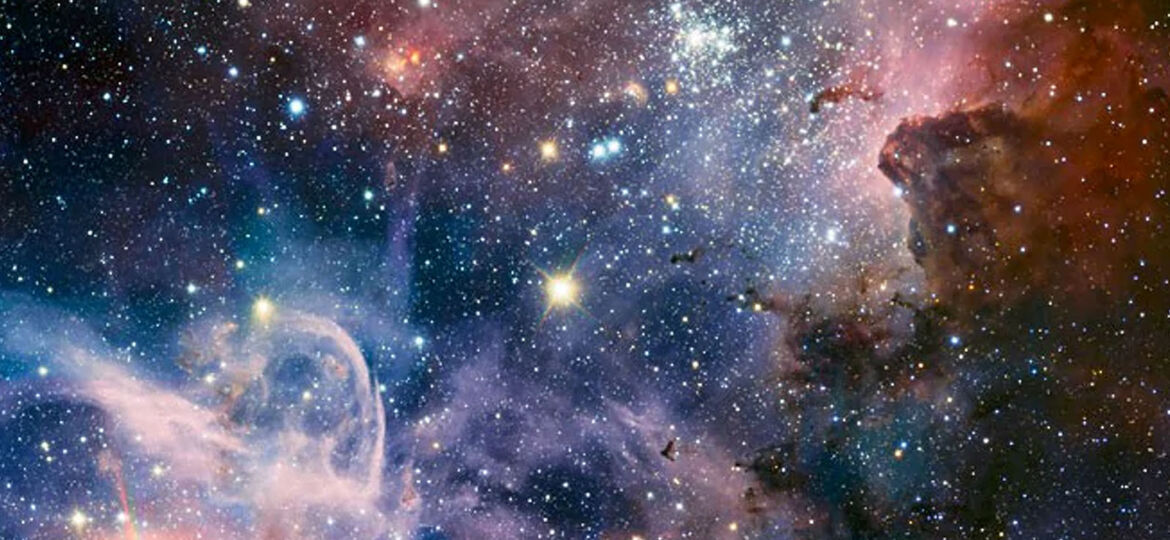
WHY THIS MATTERS IN BRIEF
There are no accurate maps of deep space but now NASA are creating their own deep space Galactic Positioning System (GPS) using pulsars as galactic beacons.
If you want to travel in deep space, for example, aboard Stephen Hawking’s interstellar spaceship, which admittedly might be a bit cramped, it’s probably going to be handy to know where you are, and how to get where you want to go, so it’s no surprise therefore that NASA wants to create it’s own deep space GPS navigation system. However, unlike on Earth where the G in GPS represents Global, in deep space it will stand for Galactic – and that’s way cooler.
When the first pulsar was discovered in 1961, scientists were astonished at the precise, regular signals emanating from the celestial object, which from Earth can look like a flickering star, and it was light heartedly given the designation LGM-1, which stood for “Little Green Men.” And some speculated that perhaps aliens had put the pulsar out there as some sort of beacon or lighthouse.
“We did not really believe that we had picked up signals from another civilisation,” said co-discoverer Jocelyn Bell Burnell in a speech years after the discovery, “but obviously the idea had crossed our minds and we had no proof that it was an entirely natural radio emission.”
Today, we know that pulsars are naturally occurring, incredibly dense neutron stars that result after a living star exhausts its energy and collapses. They rotate quickly while emitting beams of electromagnetic radiation, creating the illusion of a steady pulse.
Now, in an odd twist, we humans are looking at using pulsars as navigational beacons ourselves, and last weekend NASA launched a new instrument on SpaceX’s Dragon CRS-11 mission that will, in part, test to see if pulsars are a good way of enabling deep space navigation.
Nasa’s Station Explorer for X-ray Timing and Navigation Technology project (SEXTANT), the agency says, “will demonstrate a GPS-like absolute position determination capability by observing millisecond pulsars, which will enable autonomous navigation throughout the solar system and beyond.”
We’ve found more than 1,800 pulsars today, which are the leftover cores of older stars that underwent supernova or stellar explosions and as they rotate, they send out signals at a highly precise rate. Their signals can come out in a range of wavelengths – anything from radio to X-ray to gamma ray.
Pulsar rotation rates are so precise, NASA says, that they are similar in accuracy to the atomic clocks used inside GPS satellites to help us navigate on Earth. So just like a lighthouse, pulsars are beacons that can help astronauts find their way in the universe and the concept of X-ray navigation will potentially “enable sustained human presence throughout the solar system, as well as enhance and enable science in the outer solar system and beyond.”
First though we need to test pulsar navigation and that will need two pieces of kit to be installed on the International Space Station (ISS). The first is an instrument called the Neutron Star Interior Composition Explorer (NICER), and the second ingredient is the SEXTANT software on NICER, which can measure changes in the arrival time of these pulsar emissions as the ISS orbits the Earth. The goal is to see if SEXTANT’s measurements of the space station’s orbit mirror the actual orbit of the space station. If they match, the navigational concept could work in deep space.
“With the NICER-SEXTANT mission, we have an excellent opportunity to use the ISS to demonstrate technology that will lead us into the outer solar system and beyond, and tell us about some of the most exciting objects in the sky,” said Keith Gendreau, the principal investigator for NICER at NASA’s Goddard Space Flight Center in Maryland.
NASA is hoping to send astronauts to the Mars in the 2030s, and recently announced a small space station at the moon as a stepping stone for that ambition. This “deep space gateway,” as NASA calls it, would include “a power bus, a small habitat to extend crew time, docking capability, an airlock, and… logistics modules to enable research,” the agency announced earlier this year.
This space station would be the first phase of the gateway, while the second phase would involve a reusable deep-space transport spacecraft that could carry crews out to Mars. While I don’t know what kind of navigation this future Martian spacecraft would use, it’s possible that pulsars could help chart the way, that is, depending on how well these NICER-SEXTANT tests go.

















[…] Source link […]